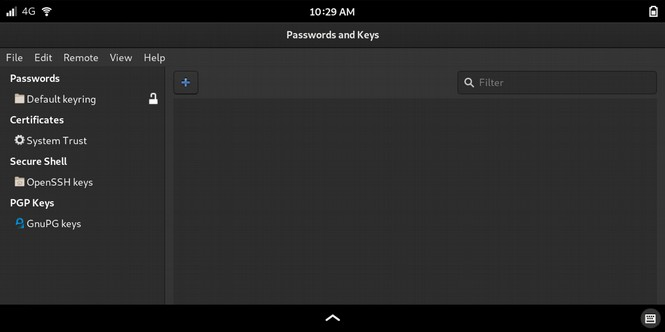Seahorse (aka “Passwords and Keys”) can be made to work by changing orientation and/or reducing the scale a bit.
(Dark theme)
Note the marked solution in this thread, which describes how to use the terminal keyboard version to execute a right-click, which may be needed at times:
